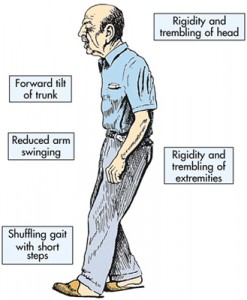Part 2 of 4
How is Parkinson’s Disease Treated?
This is People and Parkinson’s – Part 2 where I will be talking about how Parkinson’s is treated.
There are a number of different prescription drugs which, of course, will have side effects. I list below examples of some of these drugs and their given side effects.
Carbidopa/ Levodopa (Sinemet®) which was developed in the 1960s and was considered to be a real breakthrough. Levodopa on it’s own will cause vomiting and nausea so the addition of carbidopa is given to stop this problem.
to be a real breakthrough. Levodopa on it’s own will cause vomiting and nausea so the addition of carbidopa is given to stop this problem.
Side Effects: Nausea, vomiting, falling blood pressure upon standing, worsening of glaucoma, hallucination, psychosis, low blood pressure, confusion, dyskinesia, dry mouth, dizziness Continue reading People and Parkinson’s – Part 2

 usually the first to occur, with people having difficulties in walking and moving around freely. Tremor, shaking and rigidity are other obvious symptoms. Balance is often a problem where there is a tendency to be unstable when standing upright, turning or getting out of a chair. There is definitely an increased risk of falls as the disease progresses.
usually the first to occur, with people having difficulties in walking and moving around freely. Tremor, shaking and rigidity are other obvious symptoms. Balance is often a problem where there is a tendency to be unstable when standing upright, turning or getting out of a chair. There is definitely an increased risk of falls as the disease progresses.